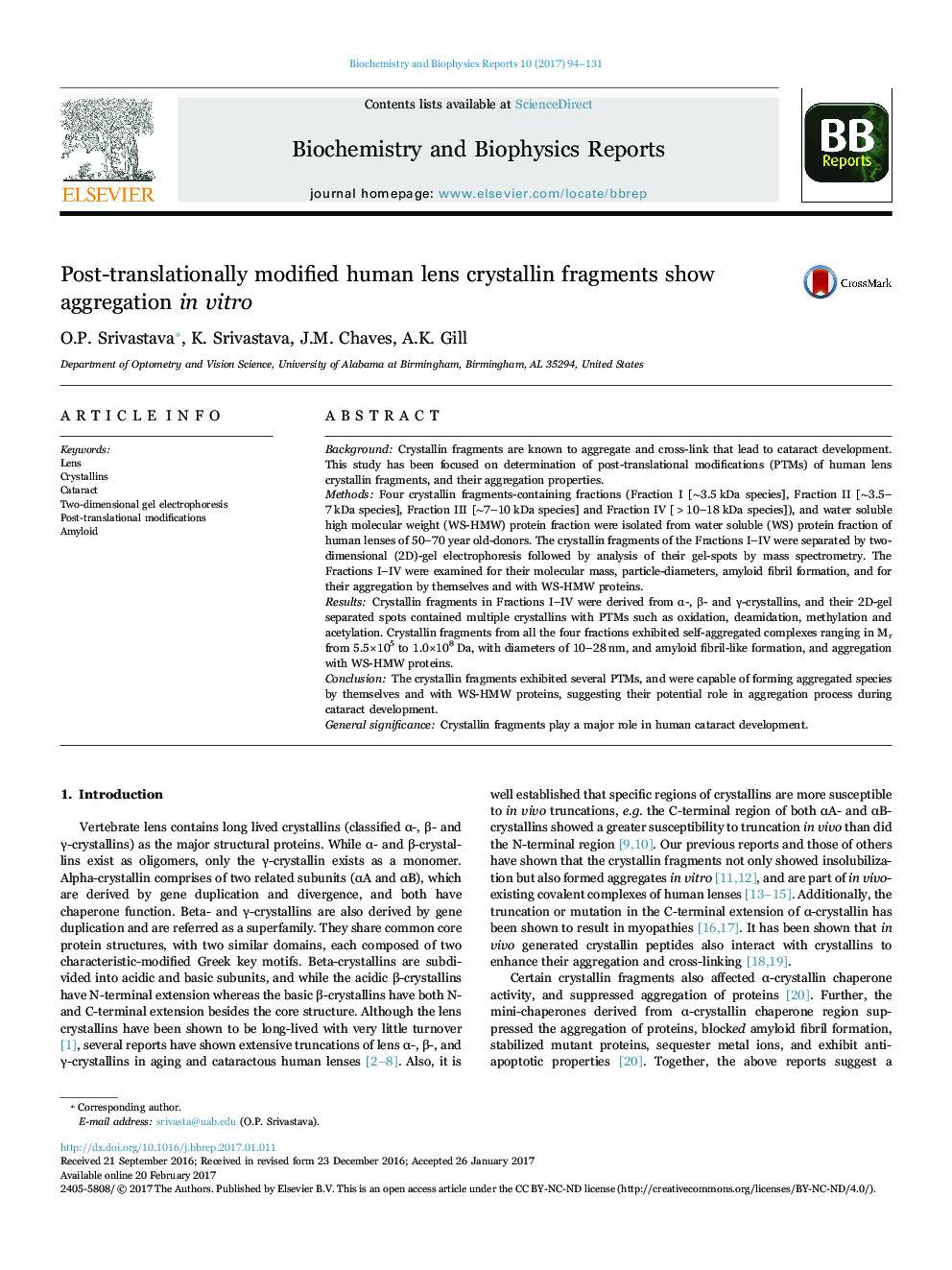| Article ID | Journal | Published Year | Pages | File Type |
|---|---|---|---|---|
| 5507001 | Biochemistry and Biophysics Reports | 2017 | 38 Pages |
BackgroundCrystallin fragments are known to aggregate and cross-link that lead to cataract development. This study has been focused on determination of post-translational modifications (PTMs) of human lens crystallin fragments, and their aggregation properties.MethodsFour crystallin fragments-containing fractions (Fraction I [â¼3.5 kDa species], Fraction II [â¼3.5-7 kDa species], Fraction III [â¼7-10 kDa species] and Fraction IV [>10-18 kDa species]), and water soluble high molecular weight (WS-HMW) protein fraction were isolated from water soluble (WS) protein fraction of human lenses of 50-70 year old-donors. The crystallin fragments of the Fractions I-IV were separated by two-dimensional (2D)-gel electrophoresis followed by analysis of their gel-spots by mass spectrometry. The Fractions I-IV were examined for their molecular mass, particle-diameters, amyloid fibril formation, and for their aggregation by themselves and with WS-HMW proteins.ResultsCrystallin fragments in Fractions I-IV were derived from α-, β- and γ-crystallins, and their 2D-gel separated spots contained multiple crystallins with PTMs such as oxidation, deamidation, methylation and acetylation. Crystallin fragments from all the four fractions exhibited self-aggregated complexes ranging in Mr from 5.5Ã105 to 1.0Ã108 Da, with diameters of 10-28 nm, and amyloid fibril-like formation, and aggregation with WS-HMW proteins.ConclusionThe crystallin fragments exhibited several PTMs, and were capable of forming aggregated species by themselves and with WS-HMW proteins, suggesting their potential role in aggregation process during cataract development.General significanceCrystallin fragments play a major role in human cataract development.
